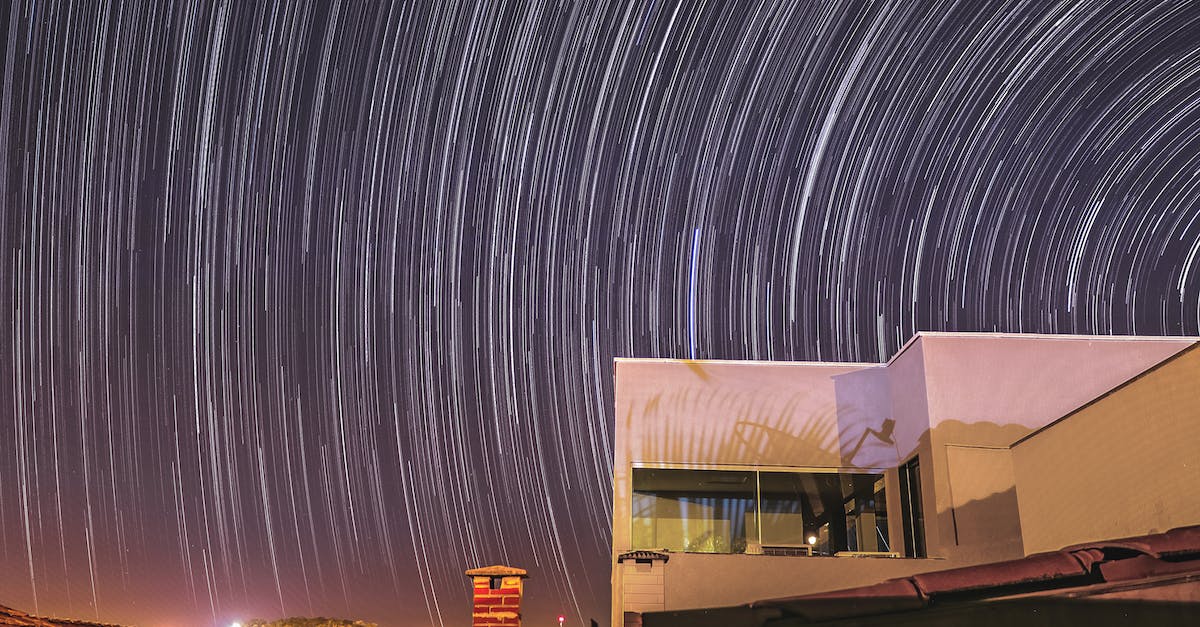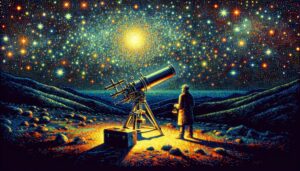This site contains affiliate links to products. I may receive a commission for purchases made through these links.
I’ve always been fascinated by the night sky. It’s not just the twinkling stars or the ethereal glow of the moon, but the stories they tell. Yes, stars do tell stories. They’re the silent narrators of ancient myths and legends that have shaped our understanding of the universe.
Astronomy isn’t just about scientific facts and figures. It’s a tapestry woven with stories from cultures around the world. These celestial tales have been passed down through generations, adding a touch of magic to our perception of the cosmos.
So, let’s embark on a journey together, a journey that’ll take us back in time, through the pages of history, and into the heart of the cosmos. We’ll explore the myths and legends that have been written in the stars, and discover how they continue to influence our understanding of the universe today.
The Power of Myth: How Stories Shape Our Understanding of the Universe
As we gaze into the infinite expanse of space, we’re not just seeing distant celestial bodies, we’re also glimpsing the tales spun by our ancestors. These stories extend far beyond the realm of science, shaping how we perceive the universe and our place within it.
Mythology is a powerful tool. It’s more than just a collection of stories from antiquity. It’s a bridge that connects us to cultures that have long since vanished. These tales give us a glimpse into how these ancient societies saw the world around them.
For instance, Greek mythology offers insights into popular interpretations of celestial bodies thousands of years ago. The Greeks named constellations after heroes, monsters, and gods. They saw the drama of their universe reflected in the night sky with Orion battling the great bull, Taurus, or Hercules performing his feats of strength.
On the other hand, Native American tribes, like the Lakota people, saw constellations as representations of animal spirits. They believed these spirits affected the Earth, guiding tribal activities such as hunting and planting.
Throughout history, different cultures have looked up at the same night sky, yet each one saw something completely unique. These diverse interpretations reveal a lot about human perception. It’s not all about what’s physically present, but also about what our minds make of it.
Here’s a snapshot of our cultural perceptions of the cosmos:
| Culture | Constellation | Interpretation |
|---|---|---|
| Greek | Orion | Warrior & mythological hero |
| Native American | Big Dipper | Animal Spirit |
Our ancestors may have had their own interpretations, but today, astronomy connects us back to these roots. As we map out the night sky, we’re not only learning about the cosmos, we’re unraveling the stories that shaped ancient cultures and continue to impact our vision of the universe. Listen closely and you’ll hear echoes of these celestial tales when you next gaze up at the sky. Notice the intertwining of ancient lore and modern science, and you’ll see that our understanding is not just formed in labs and classrooms, but also in the tales of old that human imagination wove under the star-studded canvas of the night.
The Celestial Stage: Ancient Mythologies and their Astronomical Elements
When we look up to the night sky, what we see is far more than just the celestial bodies and their physical elements. If we listen closely, we can hear the ancient tales whispering their stories through the delicate dance of constellations. Armed with a little empathy and patience, we’re able to gain a glimpse into our human history via these celestial vaults.
Let’s explore a bit about Greek mythology, one of the richest sources of these cosmic narratives. It’s fascinating how the ancient Greeks built off the universe’s interstellar components to forge epic stories. The legends of Zeus, Poseidon, and Hades manage to weave a magical tapestry that explains the cosmos’ functioning and our existence. For the Ancient Greeks, the night sky wasn’t just a collection of stars but a pantheon of gods and heroes, each embodying a meaningful story.
It’s not just the Greeks who used the celestial stage to illustrate their beliefs. Ancient societies across the globe, from the Egyptians to the Aboriginal Australians, harnessed the power of astronomy to guide their lives. For example, Egyptian mythology is replete with celestial references. Their gods, like Osiris and Isis, are heavily associated with the patterns observed in the night sky. To the ancient Egyptians, events in the sky mirrored what occurred on Earth, creating an everlasting link between their lives and the heavens.
Aboriginal Australians, some of the world’s oldest surviving cultures, told stories about the stars that go back tens of thousands of years. They used the stars to navigate, set their seasonal calendars, and pass down their cultural traditions.
Following this celestial breadcrumb trail, the stories echo down to our present era, impacting our understanding of the universe. This intersection of mythology and astronomy offers a unique perspective on how humans have always strived to make sense of their surroundings. And in our quest for celestial enlightenment, we continue to unearth more exciting intersections between ancient mythology and modern-day astronomy – offering a reminder that the universe is not just a physical reality but a cultural and mythological one at its core.
Northern Lights: Myths and Legends of the Northern Hemisphere
For countless centuries, the dazzling, ethereal spectacle we refer to as the Northern Lights or Aurora Borealis has not just awed onlookers, but it’s also stirred their imaginations, birthing myths and legends that invoke fear, wonder, and fascination. These stories, deeply rooted in ancient cultures of the northern hemisphere, breathe life into the celestial ballet that unfolds in the polar sky.
In the lands of Scandanavia, the Vikings beheld these lights with reverence, interpreting them as the Bifröst, a glowing, pulsating bridge leading fallen warriors to Valhalla, Odin’s hall. The sight of these lights incited a sense of anticipation and honor among warriors, for they believed that a glorious afterlife awaited them.
Native American tribes of the northern latitudes held a different interpretation of this phenomenon. The Algonquin people, for instance, believed that Nanahbozho, their creator, lit up the northern horizon with grandiose fires as a reminder of his presence and benevolence.
Ancient inhabitants of Estonia, however, construed the lights quite differently. To them, it was an aerial battlefield, where divine forces clashed with one another, illuminating the night in the process.
While diverse in nature, each of these interpretations reveal a common thread: the human need for storytelling, an innate desire to make sense of the cosmos, weave narratives around it, and fit it into their cultura schema. The Auroa Borealis, with its surreal, other-worldly lights, served as a perfect canvas for these aspirations.
Continuing the journey from the heart of Scandinavia, across the vast expanses of North America, and onto the shores of the Baltic, the story of the Northern Lights persists, an unending narrative woven from the extraordinary threads of ancient myths and legends. As our understanding about our universe deepens, let us not forget the romantic tales that spun around the spectacles of the night sky, reminding us of humanity’s age-old love affair with the cosmos.
Southern Cross: Tales from the Southern Skies
As we journey south, we encounter another compelling narrative. The Southern Cross – an iconic constellation prominent in southern hemisphere skies. Used as a celestial navigator, crafted into flags, and wrapped with local mythology, it’s a rich tapestry woven from both cultural symbolism and stargazing utility.
When I explored the indigenous lore of Australia, I soon discovered that the Southern Cross held special significance. To the Aboriginal Australians, the constellation was perceived as a ‘Possum in a tree’. It was thought that the possum climbed the tree each night, visible as the constellation made its nightly traverse across the heavens. This poignant tale echoes their connection with the natural world – an integral part of their spirituality and cosmic comprehension.
Switching our gaze to Africa, we find another perspective of the Southern Cross amongst the San People of the Kalahari. To them, this constellation wasn’t identified as an object or animal – but an event. The San saw the stars of the crux as depicting a series of men sitting around a fire, reflecting their deep bond with community and storytelling.
Within the Polynesian culture, the Southern Cross came to be known as the legendary ‘Anchor of the Heavens’. The Polynesians, great seafarers, utilized constellations to navigate the vast Pacific. As such, the Southern Cross is present in many of their legends, acting as an anchor point in their celestial ocean.
Having looked at different cultural interpretations, it becomes clear that these stories tell us as much about human cultures as they do about the stars themselves. The Southern Cross serves as an exemplary reminder that our heritage and tradition are guarded within the same starlight that guides our understanding of the cosmos. It bridges the gap between past knowledge and future discoveries, without the need of a binary demarcation of then and now. Just like the rotating universe, it’s a continuous, ever-evolving story that we are a part of, still unfolding, with no conclusive end.
Modern Mythology: Pop Culture and Astronomy
When we turn our gaze to the realm of modern mythology and popular culture, it’s not hard to see the enduring imprint of astronomy. Movies, books, comics, and video games all frequently draw from the stars for an inspirational backdrop. It is a reflection of humankind’s innate fascination with the cosmic vista.
Consider Star Wars, a prime example of pop culture’s astronomical influence. The famed series, set “in a galaxy far, far away,” showcases a multitude of planetary systems, each with its unique culture – all under a canopy of star-studded skies. Even the story arc dwells on the eternal protagonism of light against the dark – a motif reminiscent of the day-night dichotomy induced by celestial bodies.
Let’s also ponder on the Marvel Cinematic Universe. Recall Guardians of the Galaxy, where a diverse group of beings unite to protect cosmic entities – the ‘Infinity Stones’. These ‘stones’ are allegories of the key elements forming universe – time, space, mind, soul, reality, and power. Here, we can perceive how storylines reach for the stars, tying earthly characters to celestial realities.
And what about Interstellar? It’s a film that marries hard science with metaphysical dilemmas. It prominently showcases the theory of relativity and wormholes – a direct dip into astronomical knowledge. It makes the outer space not just a backdrop but a pivotal character in the narrative.
Science fiction literature, too, tremendously leverages celestial myth-making. Arthur C. Clarke’s 2001: A Space Odyssey and Isaac Asimov’s Foundation series envelop readers in grand star-studded sagas. They illustrate people’s persistent adoration for space exploration, our ongoing dialogue with the cosmos, and the human condition under cosmic awareness.
A common thread through all these – be it film, literature, or comic book – is the quest for understanding ‘what’s out there’. It’s a testament to humanity’s age-old yearning for cosmic comprehension that transcends borders… and genres. And without a doubt, it’s a narrative that will continue, as long as the stars fill our night skies.
Conclusion
So there you have it. The stars aren’t just distant celestial bodies. They’re the canvas upon which we’ve painted our myths, legends, and cultural narratives. From the Southern Cross constellation’s interpretation by different cultures to the influence of astronomy on modern mythology, it’s clear that our relationship with the stars is deeply woven into our collective consciousness. This connection is not just about understanding the cosmos, but also about understanding ourselves and our place in the universe. The stories we tell, whether they’re ancient myths or modern sci-fi blockbusters, reflect our ongoing quest to comprehend the universe. As we gaze up at the night sky, we’re not just looking at stars. We’re looking at stories. And as long as there are stars in the sky, we’ll continue to weave new tales, explore new themes, and deepen our understanding of the cosmos and our place within it.
Frequently Asked Questions
What is the main focus of this article?
This article explores the influence of mythology on our understanding of the universe, specifically focusing on the myths and legends surrounding the Southern Cross constellation across different cultures.
How does the article define the role of cultural beliefs in interpreting the Southern Cross?
The article highlights how different cultures like the Aboriginal Australians, the San People of the Kalahari, and the Polynesians, each interpreted the Southern Cross uniquely, reflecting their authenticity and the deep connection they have with nature.
Does the article only focus on historical mythology?
No, the second half of the article draws attention to the modern mythology and its influence on popular culture, including mentions of Star Wars, the Marvel Cinematic Universe, and Interstellar.
What is the relationship between stars and cultural narratives according to the article?
According to the article, stars and cultural narratives are intertwined. The stories we tell about the stars not only educate us about astronomical wonders but also paint a picture of the cultures that wrote them.
How does the article conclude on our quest to understand the universe?
The article concludes that the quest for understanding the universe will continue to unfold as long as there are stars in our night skies guiding our curiosity and inciting imagination.




